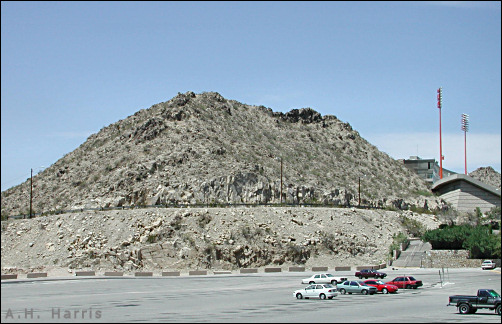

Sometimes the romance of things is spoiled by nasty facts. After all, wouldn't it be dramatic and attention gathering to be able to say that the University of Texas at El Paso is perched on top of a volcano? It would add that little spice of danger; after all, aren't volcanos unpredictable? Why, students would flock to the campus just to be able to talk about how they brave the unknown every day to get a good education.
Alas, it apparently turns out that the Campus Andesite is intrusive
rather than extrusive—a fancy way of saying that it never made it to the surface in a
molten state. Instead, it pushed its way up from the depths and then stalled, stuck in
place as it cooled. The hills on which the campus is built saw the light of day only
after the overburden eroded away many millions of years later. But cheer up, the campus
still lies on the edge of the Rio Grande Rift, to say nothing of an international
border and, in name anyway, a major river.

Contributor: Arthur H. Harris, Laboratory for Environmental Biology, Centennial Museum, University of Texas at El Paso.
Desert Diary is a joint production of the Centennial Museum and KTEP National Public Radio at the University of Texas at El Paso.

Outcrop of Campus Andesite. The Sun Bowl lies beyond it to the right; in the foreground is part of the student parking area on the periphery of the University of Texas at El Paso campus.